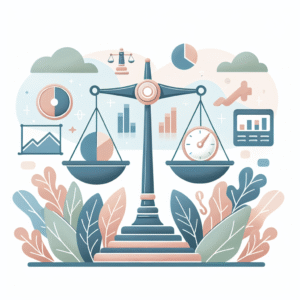The question is being asked by analysts, but also by artists and cowboys of the vast, and partly still wild, prairies of Crypto: are NFTs a true, new frontier of art, or simply one of the new steeds to be ridden by the gang of usual unknowns who have found their trick to make a lot of money with crypto coins?
By now, in the US, NFTs are the topic that can cause an immediate spike in ratings when Paris Hilton and Jimmy Fallon start discussing them on a prime-time talk show, generating a veritable viral wave on Twitter.
While Paris talks about the ones she has won, and in particular some Bored Ape Yacht Club ones, and how she is actually looking for a Bored Ape that somehow reminds her of herself, Jimmy takes out his smartphone and shows off the tokens he himself is collecting, and there is immediate chemistry, both between them and between them and Twitter. The studio audience applauds, it is not clear whether out of genuine agreement or to disguise an embarrassing bewilderment.
There is nothing to be done: non-fungible tokens are the craze of this second decade of the third millennium. For those few hermits who still don't know, these are smart contracts that represent the ownership of a digital work of art.
The discussion about them wavers fearfully between the fantastic sums of crypto-money that they are said to be able to move, to the ethical-environmentalist debates on the impact that the mining-factories necessary to manage the blockchain cause with their very high energy consumption, to the ethical-legal debates on the fact that in several cases they are used for important money-laundering operations (or money laundering, as my trusted barber would say).
What initially seemed like a fringe movement has become a real sector of the internet in dizzying growth, with NFTs being sold by auction houses such as Christie's and Sotheby's, as well as by a huge number of platforms, the leader of which is undoubtedly OpenSea.
There are now countless celebrities who have quickly jumped aboard the cheerful crypto-bus, not only purchasing it, but even minting (in NFT jargon) their own personal collections.
Paris Hilton's have a shiny, pink finish, and anyone who wants their Crypto Queen, according to today's prices, should be prepared to shell out the equivalent of a million dollars in Ethereum. Oh sure, the next day they can put it back on sale at a starting price of one million, with substantial increases, and that's the beauty of it: becoming an "art" collector (for now, the quotation marks are still required), but at the same time an auctioneer.
What a lovely new toy for those who have a faucet that pours money next to their desktop…
The writer, after having been assiduously engaged with it for some time now, finds it a topic as disconcerting as it is intriguing. The gold rush that NFTs have generated in these early years has been a meeting ground for real artists, less real artists, real art collectors, speculators disguised as collectors and full-blown criminals (see above the reference to money laundering).
On the other hand, it must be noted that for many examples of the category of true artists they are proving to be a valid source of income, which in some way protects them from the suffocating requests of clients and gallery owners who are not too generous in their compensation (interesting and not secondary is the fact that the digital artist, thanks to the potential of the blockchain, continues to earn a small royalty on all subsequent sales of his work).
Still in the category of true artists (studying the others mentioned above is either impossible or useless), I met someone who a few years ago made ends meet by selling artworks for one hundred euros each, and recently placed a few works online at prices ranging between 1 and 10 Ethereum (let's say between two thousand and twenty thousand euros).
Ultimately, NFTs are just a small aspect of a reality that is changing and is progressively taking on aspects that will make it completely different from how we know it now.
We live in an age where it is possible to experience zero gravity without entering space, own a virtual asset that costs more than its physical form, or teleport to the office while remaining at home.
The virtual world is no longer a game, but it penetrates our daily lives, as it did with that graphic artist who saw his meager compensations transform into tens of thousands of euros (yes: tax-free). And now the dawn of a new digital age is ferrying the physical world into the Metaverse.
It may be a Golden Age for many, while some may miss this train and hide in their waste, but this will certainly not be the case for the Alpha and Zeta generations: for them the Metaverse, of which NFTs will be an important part, is already a very near future.
#nft #metaverso #crypto #ethereum #bitcoin







